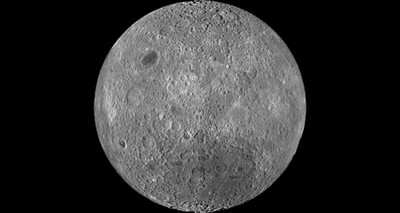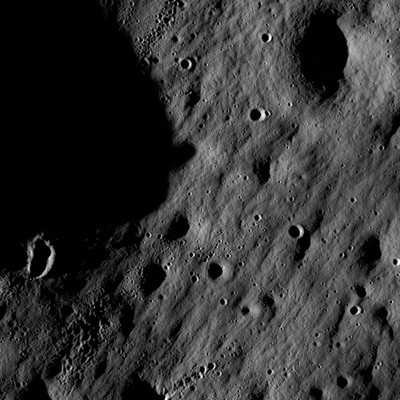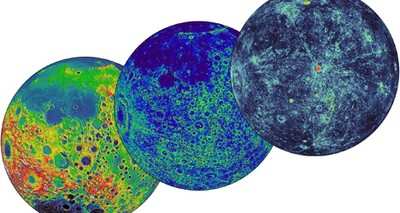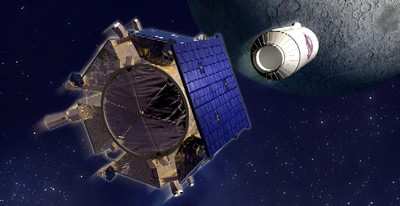Declares "Full Mission Success" For LRO
NASA has declared full mission success for the Lunar
Reconnaissance Orbiter (LRO), saying the spacecraft "changed our
view of the entire moon and brought it into sharper focus with
unprecedented detail."

NASA's Exploration Systems Mission Directorate (ESMD) operated
the LRO spacecraft and its instruments during the one-year mission
phase. Now that the final data from the instruments have been added
to the agency's Planetary Data System, the mission has completed
the full success requirements. The data system, which is
publicly available, archives data from past and present planetary
missions as well as astronomical observations and laboratory
data.
The rich new portrait rendered by LRO's seven instruments is the
result of more than 192 terabytes of data, images and maps, the
equivalent of nearly 41,000 typical DVDs. "LRO is now in the very
capable hands of NASA's Science Mission Directorate, with ongoing,
near continuous acquisition of science data," said Douglas Cooke,
associate administrator of ESMD at NASA Headquarters in Washington.
"Exploration will be well served by the LRO science mission, just
as the LRO exploration mission has benefited lunar science."

The primary objective of the mission was to enable safe and
effective exploration of the moon. "We needed to leverage the very
best the science community had to offer," said Michael Wargo, chief
lunar scientist of ESMD. "And by doing that, we've fundamentally
changed our scientific understanding of the moon."
The most precise and complete topographic maps to date of the
moon's complex, heavily cratered landscape have been created from
more than four billion measurements, which are still coming in,
taken by LRO's Lunar Orbiter Laser Altimeter (LOLA). LOLA has taken
more than 100 times more measurements than all previous lunar
instruments of its kind combined, opening up a world of
possibilities for future exploration and for science.

The Lunar Reconnaissance Orbiter Camera (LROC) revealed stunning
details after imaging nearly 5.7 million square kilometers of the
moon's surface during the mission's exploration phase. That is
roughly the same amount of land as all contiguous states west of
the Mississippi River. Though earlier missions also imaged the
moon, what sets LROC apart is its ability to image with surface
pixels that are only 1.5 feet in size, small enough to distinguish
details never before possible. "With this resolution, LRO could
easily spot a picnic table on the moon," said LRO's Project
Scientist Richard Vondrak of NASA's Goddard Space Flight Center in
Greenbelt, MD.
While studying the Hermite crater near the moon's north pole,
LRO's Diviner Lunar Radiometer Experiment found the coldest spot in
the solar system, with a temperature of minus 415 degrees
Fahrenheit (minus 248 degrees Celsius or 25 kelvins).

To further explore these regions, LRO's Lyman Alpha Mapping
Project, which can "see" in the dark, is imaging the shaded areas,
while LOLA's precise measurements map solar illumination. This work
has provided new insight into the shadowed regions and also
revealed areas that receive nearly continuous sun. Because sunlight
itself is a resource on the moon, knowing there are areas that get
sun for approximately 243 days a year and never have a period of
total darkness for more than 24 hours is extremely valuable.
Complementing those efforts are both the Lunar Exploration
Neutron Detector (LEND) and the Miniature Radio Frequency advanced
radar, which are searching for deposits of water ice. LEND also
seeks hydrogen, which could be used potentially as fuel. LRO's
Cosmic Ray Telescope for the Effects of Radiation is studying the
lunar radiation environment, which is important to keep astronauts
healthy and safe.
 Bolen Gives Congress a Rare Thumbs-Up
Bolen Gives Congress a Rare Thumbs-Up The SportPlane Resource Guide RETURNS!!!!
The SportPlane Resource Guide RETURNS!!!! Buying Sprees Continue: Textron eAviation Takes On Amazilia Aerospace
Buying Sprees Continue: Textron eAviation Takes On Amazilia Aerospace Hawker 4000 Bizjets Gain Nav System, Data Link STC
Hawker 4000 Bizjets Gain Nav System, Data Link STC Echodyne Gets BVLOS Waiver for AiRanger Aircraft
Echodyne Gets BVLOS Waiver for AiRanger Aircraft






